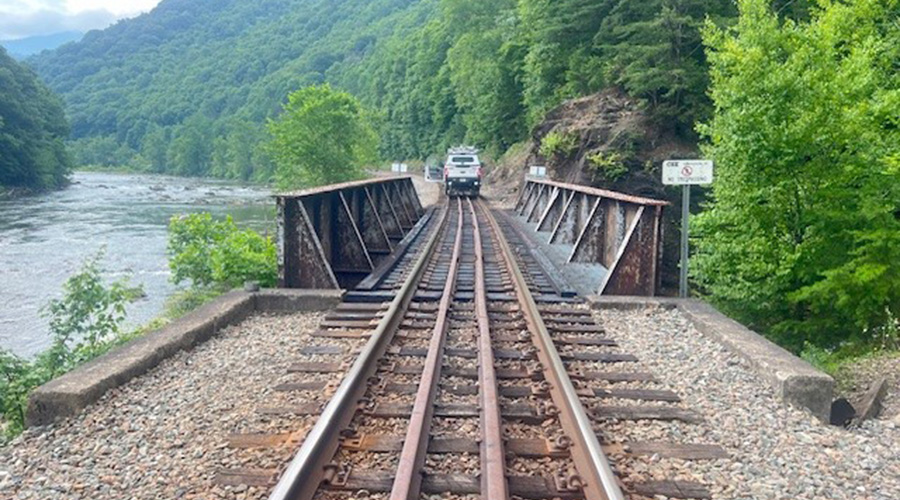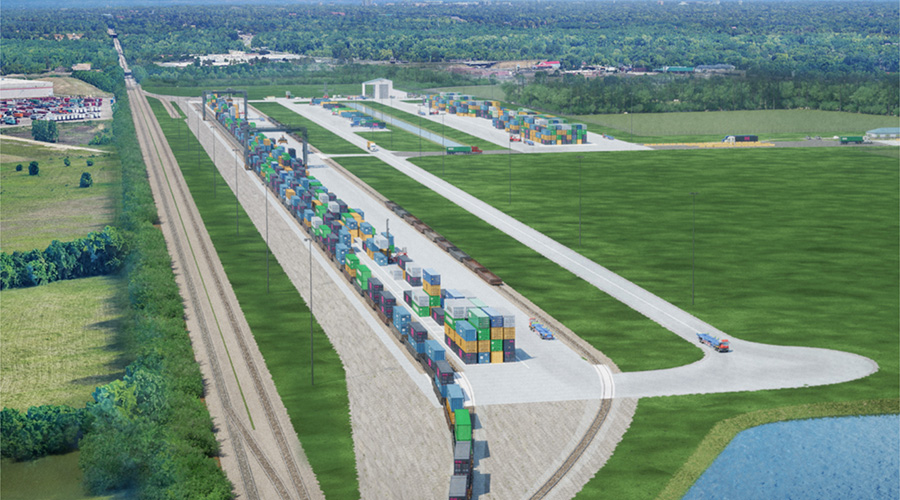BNSF combats strong winds in New Mexico mountain pass
9/10/2024
By Jeff Stagl, Managing Editor
Along its Southern Transcon route between southern California and Chicago, BNSF Railway Co. operates trains in areas where winds regularly howl.
Parts of the route run through open desert terrain that’s prone to high winds. At certain speeds and in specific conditions, wind can be strong enough to tip cars off a track or create debris and obstructions that block a train. When wind speeds exceed 50 mph, trains potentially need to slow down or stop.
One extremely windy point on the Transcon that tends to impact BNSF’s operations often is Abo Canyon, a mountain pass through the Manzano Mountains in central New Mexico. BNSF predecessor the Santa Fe Railway built the line in 1908.
Trains need to traverse track and a bridge to clear the canyon, which experiences high winds that tend to blow hard in one direction from the east toward the west.
BNSF has recorded wind gusts exceeding 90 mph at Abo Canyon. The railroad maintains a network of wind stations across its system that measure wind speeds, wind direction, air temperature, humidity levels and other conditions.
The stations send warnings to BNSF’s network operations center, which notifies train crews in affected areas. Field supervisors also use handheld anemometers to measure the wind.
In addition, BNSF uses AccuWeather to monitor winds across its network in real time, which supports direct communication between train crews and dispatchers about the weather.
The railroad issues high-wind warnings based on measurements and other criteria, and holds trains when necessary. The warnings typically increase at the canyon during strong winter storms and the monsoon season, BNSF officials said in an email.
 The fence is designed to deflect wind from one place to another, helping to lower any impacts against the side of trains as they cross the bridge. BNSF Railway Co.
The fence is designed to deflect wind from one place to another, helping to lower any impacts against the side of trains as they cross the bridge. BNSF Railway Co.“For safety reasons, our wind model dictates when trains must be held, and there have been cases where extreme winds have been present longer than 24 hours,” they said.
To reduce train delays and combat high-wind effects in the canyon, BNSF began implementing a countermeasure last year. Crews installed a 1,300-foot-long wind fence along the bridge to provide added protection for trains crossing the structure.
Completed in June, the wind fence is anchored on each end of the bridge to driven-pile foundations. The panels across the bridge required new towers at each pier to hold the screens.
“If the wind fence had been attached to the spans, it would have created too much lateral load on each span,” BNSF officials said.
The wind fence is designed to slow the speed — and potential impacts — of strong wind by deflecting it from one place to another. It helps lower the wind’s effects against the side of trains that cross the bridge.
The wind fence paid dividends in July. Trains operating that month in the Clovis Subdivision — which includes the canyon — encountered 25% fewer wind events and logged significantly fewer minutes in train delays compared to July 2023.
BNSF has installed two other wind fences in Browning and East Glacier, Montana, that have a similar design and function as the Abo Canyon fence.
“We [also] have numerous snow fences that are designed to capture drifting snow to help keep critical areas, such as crossover switches, free of snow drifts,” BNSF officials said.
When winter weather strikes, divisional command centers are established following the necessary preparations and forecast, with key personnel ready to activate action plans 24/7.
The railroad also continues to implement other wind technologies. For example, BNSF employs MAXWIND, an automated system designed to determine the speed each train can operate safely based on train size and such characteristics as geography and wind conditions.
“Although some winds are extremely powerful, and trains must stop for safety reasons, these technologies and communication efforts allow us to move safely and efficiently during wind events when it is safe to proceed,” BNSF officials said.


